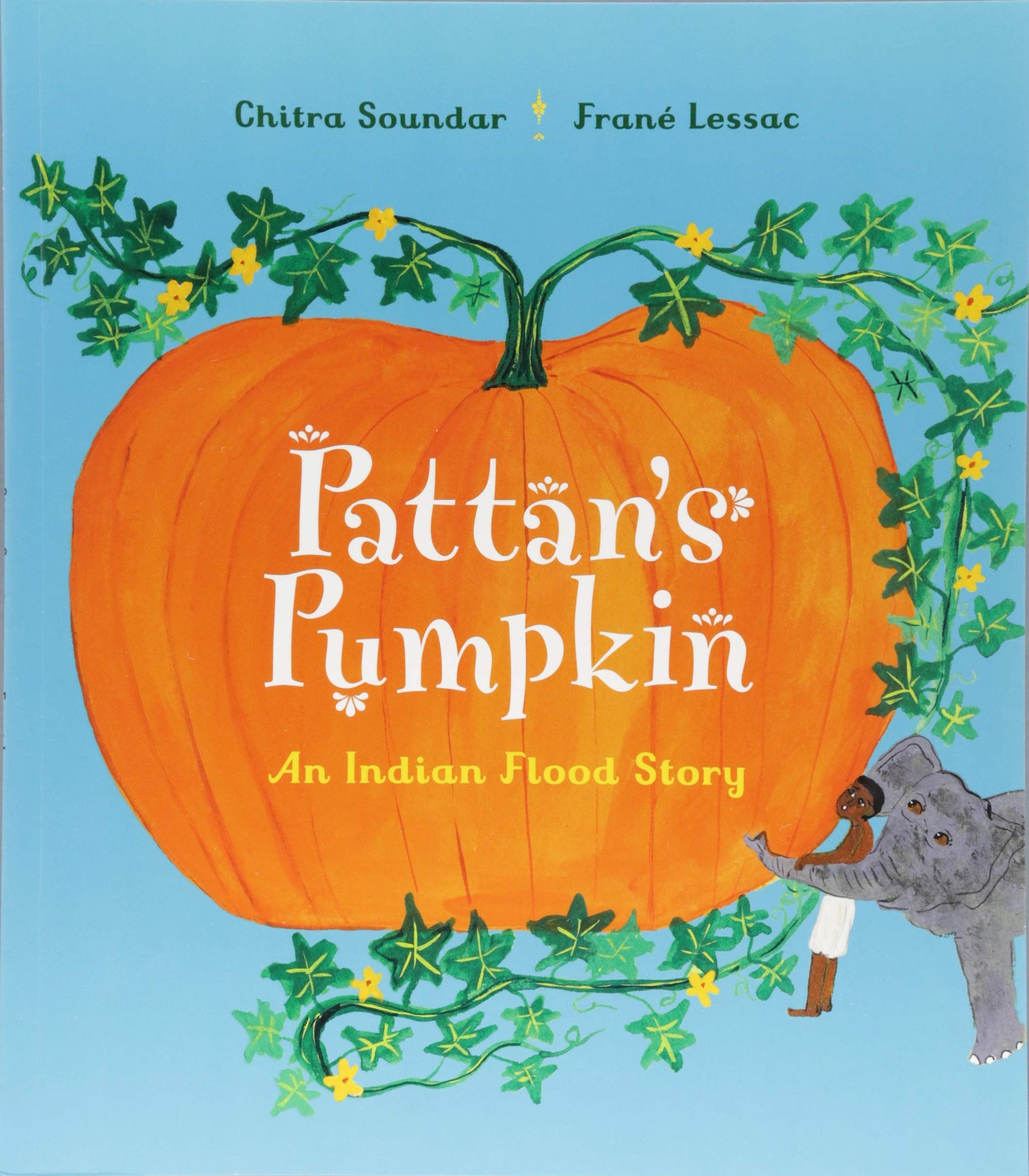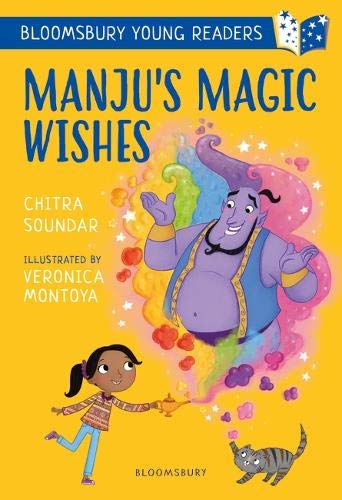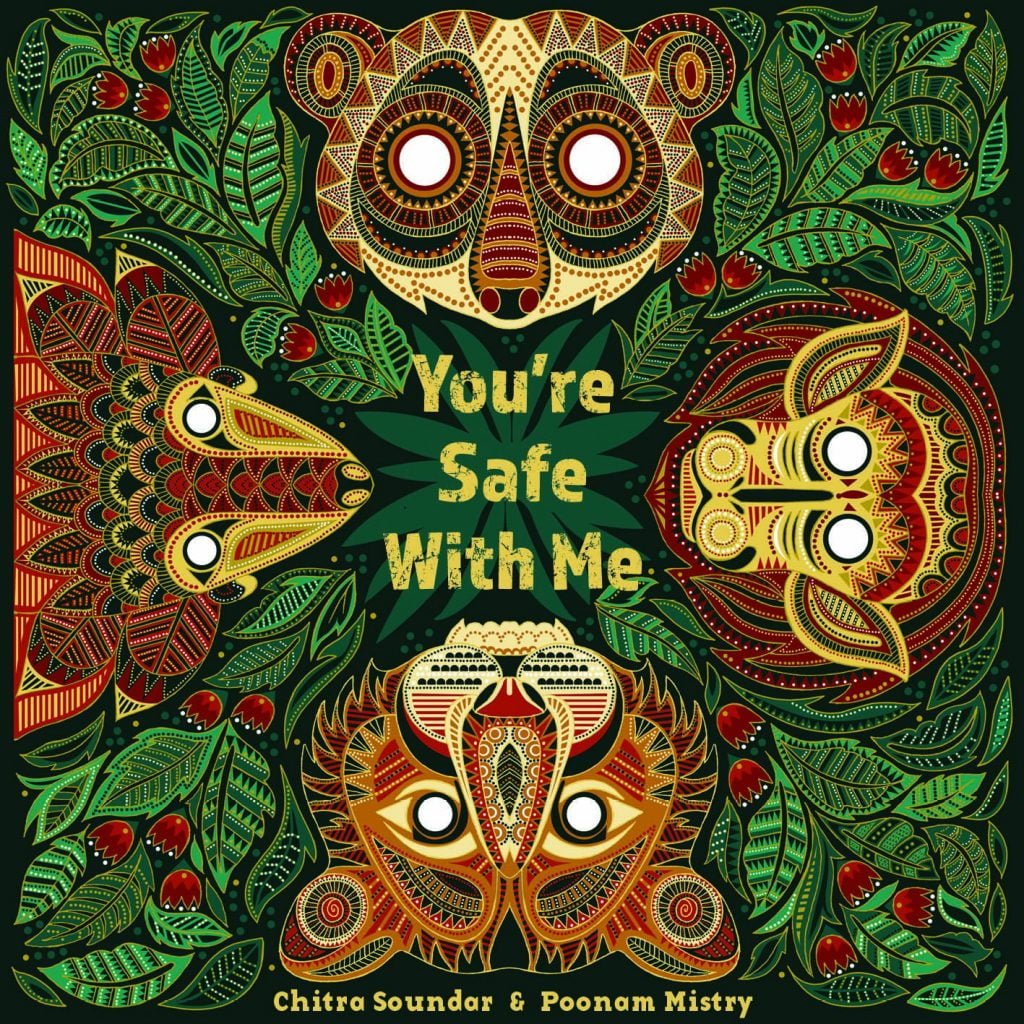It’s an honour today to invite children’s author Chitra Soundar into The Reading Realm to talk to Ian Eagleton about her career, writing process and publishing!

I was first introduced to your work when I read A Dollop of Ghee and a Pot of Wisdom many years ago and it remains one of my favourite collections of stories. Can you tell our readers a bit about this collection? Do you have a favourite story in it?
I grew up listening to trickster tales based on medieval court jesters in Indian kingdoms. These stories were full of funny twists and yet had the job of righting wrongs. Instead of retelling the stories, I wanted to reimagine them through the eyes of two young boys. This allowed me to weave the various regional stories together into one narrative, but also create protagonists who are closer to age of the readers.

Your picture books (You’re Snug With Me, You’re Safe With Me, you’re Strong With Me) with Poonam Mistry are gorgeous and have been nominated for, and won, many awards. Can you describe your working relationship with Poonam Mistry?
Well we don’t work together in the literal sense – which is common for most picture book author-illustrator pairings. I write the story first and it gets edited and then when it’s as ready as it can be, it goes to the illustrator. She then ruminates on the text and imagines the pages. With these three books, never once have we discussed anything before or during the process. Only when I’ve seen the almost-final pdf or when the publisher wants minor changes to fit the text per page, I see how my words have been interpreted.

What do you feel Poonam Mistry’s illustrations and artwork bring to your lyrical, evocative words?
It’s a very unique collaboration – the illustrations extend the possibilities of the words in a deeper way. For example in You’re Safe With Me, there are dragonflies, beetles, a hornbill and fishes and frogs that leap at you, with the words not referring to them. It brings to life the forest, and adds more detail, more imagination. Also the style adds intrigue. For example if you are not observant, you will not see Mama Elephant in the first spread. You are always discovering new things with every reading.
Do you prefer writing picture books or longer stories?
I think writing picture books is my natural form. My writing and imaginative age is 7-8. So I’m always thinking up stories in picture book or chapter book form for that age-group rather than a novel. I like keeping the story in my head all at once and seeing the story as a film in my imagination as I write. But I’m always experimenting with form – one day maybe I will write a longer book.
Lots of children love the Farmer Falgu series, illustrated by Kanika Nair. What’s next for Famer Falgu? What do you think he might be up to now?
We have four books in the Farmer Falgu series. Farmer Falgu Goes Kite Flying was in the summer reading challenge last year and I introduce Eila, his daughter in this book. There are only 4 books for this farmer even though surely he is having his own adventures. We were at some point thinking of a spin-off for Eila – but I haven’t found the time yet to imagine her adventures. Watch this space.
This slideshow requires JavaScript.
You’ve written thirty children’s books over your career – that’s incredibly impressive! What challenges and obstacles did you face when you first started and how do you so keep focused?
It’s over 40 at the last count. When I started writing, time was my first obstacle. I had a full-time job that was more than full-time. I was in a country that didn’t publish that many children’s book for pleasure or picture books, primarily because western publishers were flooding the market with discounted books.
But when I came to the UK, I suddenly went from writer to writer of colour, even though I was oblivious to it. Time was still a constraint with a demanding day job, I got up at 4 am every morning and wrote until 7 before I jostled in the trains to work. I often set weekly goals for finding time to write – not just children’s stories, but write.
I never used to go on beach holidays or city breaks – a throwback to my childhood in India where we could afford a short holiday in another town only once in four years. I went on writing workshops and retreats during my time off. It was a welcome change to give myself five full days to write.
I recently learnt about the cartoon rules of motion – “Any body suspended in space will remain in space until made aware of its situation.” I think this applies to my situation entirely. I did not know that persons of colour had a different playground to play in or different rules to live by. I kept submitting and I kept getting rejected. I tried over and over again. I was suspended in this space.
And then one day I suddenly realised why. So I changed course and submitted to Indian publishers and got 4 acceptances in 4 months, which gave me confidence but also made it clear that publishing in the UK is an uphill battle for a writer of Indian origin.
But on a personal level, I just write. I write every day, I learn the craft, I try new things. I fill the well of my imagination.

What are your feelings about the Reflecting Realities report carried out last year by CLPE, which found that only 4% of children’s books published in 2017 featured BAME characters? Were you surprised by the findings? What can publishers do to address this?
I wasn’t surprised at all. In reality despite the current political climate, the US does better in this than the UK, perhaps because much of the creatives in the US are liberal. In the UK, publishing is more elite, less rebellious and disruptive. It’s encouraging to see many small publishers are filling the gaps despite not getting adequate government support.
Publishing does need to change from the inside. If gatekeepers are not representative of our population, then the commissioning, the selling, the marketing will not be representative. Secondly, there are different avenues to find new readers. Like in other consumer goods, we need to go where customers are with products they want.
One reason I travel 6 hours to get to a school in a small rural town in England is because I want to tell wonderful Indian stories to children and teachers who would otherwise never find out about them. It opens the world for young readers to new worlds and stories and yet find the universality of life.
Things are changing slowly – it’s a bumpy ride with ups and downs and going faster is not always possible. I’m hoping to work with like-minded people in the industry to make it less bumpy for those behind us. Initiatives like Book Trust Represents and the research that UCL and CLPE are doing in older and young fiction is critical for us to baseline and aim for progress.
Are you concerned that the results of the Reflecting Realities report could lead to BAME characters being featured in books but not really being fully developed characters? How can we avoid this?
All writing is enriched by good research. If not written from a lived experience, then there is a risk of misinterpreting, misreading and stereotyping. Many of us understand each other’s cultures from derivative sources – movies, a holiday, a TV series or a documentary. That’s not sufficient for a writer. We need to understand the cultural symbols, the nuances of everyday living. Even when I write about India, and my own culture, I research quite a bit.
I’m not saying no one should write outside their experience. But with that immense power comes a significant responsibility. I’ve stopped reading many authors, stopped watching trending TV programmes because of bad representation. I wouldn’t want my nephew to stop reading books when he finds an caricature or a stereotype in the books he is reading. It doesn’t just put him off reading one book, he might suddenly become aware that what he knows as life is not in books and he will leave reading by the classroom door when he comes home. These little impacts are like tiny cracks inside the core of the earth. They might not be visible now, they might not affect sales, but we might alienate a large population of people from reading, or a career in publishing.
I read a very insightful article recently, published by The Guardian called ‘Here is a story! Story it is’: how fairy tales are told in other tongues. The article came about after you posted online asking how different cultures and countries start their fairy tales. Can you share some of these with us? Do you have a favourite fairy tale opening?
They are all gathered here in a document with resources for teachers to use in classrooms.
I’m going to reveal my favourites later – I’ve written a piece for an anthology using my favourite openings, to string together a new story. My inclusion in this anthology was also triggered because of the twitter thread. Watch this space for more news on this.
Many of your books are set in India or inspired by Indian myths and legends. Are they any other children’s books and stories you’ve enjoyed recently that celebrate India?
To be honest there are very few contemporary Indian stories that are published in the UK for children. A 2015 list of books in the Guardian did not have a single contemporary suggestion.
My recent favourite is Joseph Coelho’s If all the world were, because of the Indian grandad and the beauty of the telling. I also have Aru Shah and The End of Time by Roshani Chokshi on my TBR pile. Her book was published in the US and now available in the UK.
This slideshow requires JavaScript.
Can you give three top tips for children who love writing and would like to be author in the future?
- Read a lot – read things you like and don’t like. Read new authors, read funny stuff and serious stuff, read non-fiction and historical.
- Exercise your imagination every day – keep a notebook where you write down ideas, names of places, details you observe – whether it is the colour of trees or the bent street sign near your school.
- Write and draw stories as often as you can. Maybe once a week, maybe once a month – give yourself a target and a deadline.
There are more writing tips here.
I know you visit lots of schools. What are your top tips to schools for a successful author visit?
- Read the author’s books before the visit.
- Use the visit as an opportunity to create a buzz around reading. Create displays, readathons, cover competitions and more.
- Use the visit as an opportunity to create a buzz around writing, after the author visit. Create stories, poems, comic strips inspired by the workshops.
There are a lot of resources here for schools and teachers who want to invite authors to schools.
Finally, can you tell us what you’re working on now?
My current project is about two mixed-race siblings, 7 and 4, navigating their world and multi-cultural family in humorous and heartfelt ways. The book is for 5-8 year olds, with 3-4 stories in it. I’m still looking for a publisher for it – but as it is based on my lived experience, I keep coming up with wonderful new stories to tell. Fingers crossed!



